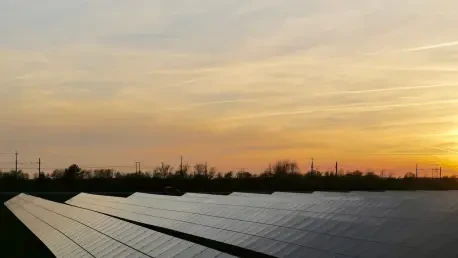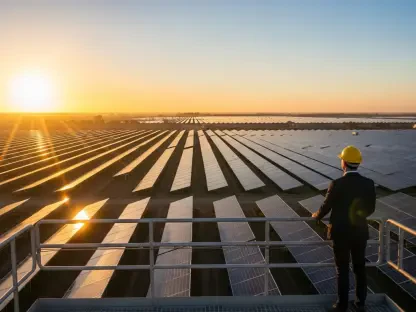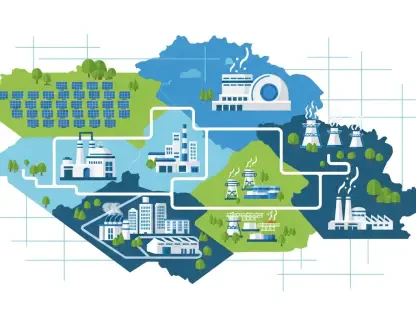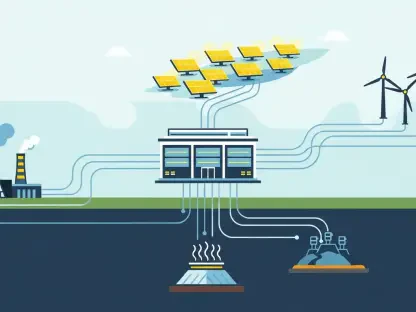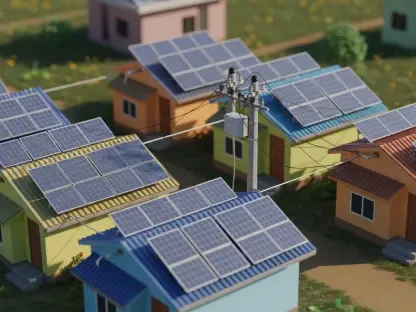In recent weeks, China has faced unprecedented heat conditions affecting millions across provinces like Chongqing and Guangzhou. This climatic anomaly raises questions about its impact on power demand and socio-economic dynamics nationwide. As temperatures soar, some experts wonder if such conditions could spur significant shifts in China’s power infrastructure and broader economic sectors.
Tracing the Climatic Transformation: Setting the Scene
Across China’s vast landscape, residents from over 200 million households have experienced the challenges of extreme heat. Predominantly driven by a subtropical high-pressure system, temperatures have climbed to as high as 50 degrees Celsius. While the country’s power grid currently withstands this surge in demand, the looming threat of power rationing during peak summer days cannot be ignored. Analysts highlight the pivotal role solar energy has played in offsetting power shortages, yet note hydroelectric contributions have lagged behind last year.
Unpacking the Heatwave’s Gravity: Economic and Social Ripples
Surging Temperatures, Surging Demand: The Battle for Power Stability
The relentless heat has inevitably led to increased power demands. Power consumption reached an all-time high of 1.5 billion kilowatts, leading experts to discuss the potential strain on the grid and its resilience. Some specialists emphasize the growing adoption of solar energy, which has proven unexpectedly beneficial in meeting these heightened demands. However, contrasting opinions suggest concerns over hydroelectric performance, as outputs show a downward trend compared to previous years.
Climate Change and Consumer Behavior: A New Heat-Induced Spending Pattern
This heat wave has also catalyzed changes in consumer behavior, driving up sales in specific sectors. Air conditioners and handheld fans have seen significant sales spikes, rising 112% and 103% respectively month-on-month. This trend indicates an evolving consumer sentiment, which is increasingly geared toward self-preservation and comfort amid scorching conditions. The catering industry, too, has responded to increased demand for cool refreshments, showcasing opportunities amidst challenges.
A Glimpse Into Impact: What Lies Ahead for China’s Power and Markets
Innovations and Emerging Energy Solutions: Navigating The Heat
The ongoing heat wave prompts discussions around innovative energy solutions. Industry conversations are abuzz with potential technologies aiming to bolster grid stability, suggesting a shift toward more sustainable energy sources. Regional climate variations further complicate the narrative, as provinces differ in responsiveness and impact, prompting assessments of current adaptation strategies for future preparedness.
Beyond the Thermometer: Unique Economic and Societal Angles
Experts draw comparisons to global responses to extreme heat, revealing varied approaches to climate adaptation elsewhere. Speculative forecasts on economic and climate evolution underscore the need for proactive measures, with some proposing mechanisms to balance immediate power needs without compromising long-term sustainability. These insights urge stakeholders to pursue informed strategies that account for both immediate strain and lasting benefits.
Heatwave Insights Recap: Key Lessons and Strategic Proposals
Bridging Today and Tomorrow: Sustained Relevance of Heatwave Dynamics
While China’s power infrastructure copes with demand pressures, the broader implications of climate-induced challenges persist. From supply chains straining to meet cooling product demand to emerging energy advancements, these conditions underscore the necessity of strategic foresight. Reflecting on recent experiences, experts advocate for measures fostering resilience against fluctuating climates.
Engaging the Audience: A Thoughtful Call for Proactive Change
Though the heat wave underscores pressing issues, it also invites reflection on actionable approaches to mitigate impacts. Industry leaders and policymakers might consider prioritizing adaptive innovations and sustainable initiatives. By leveraging insights from this heat spell, stakeholders can explore new avenues for economic and environmental growth, laying groundwork for a balanced and resilient future.
